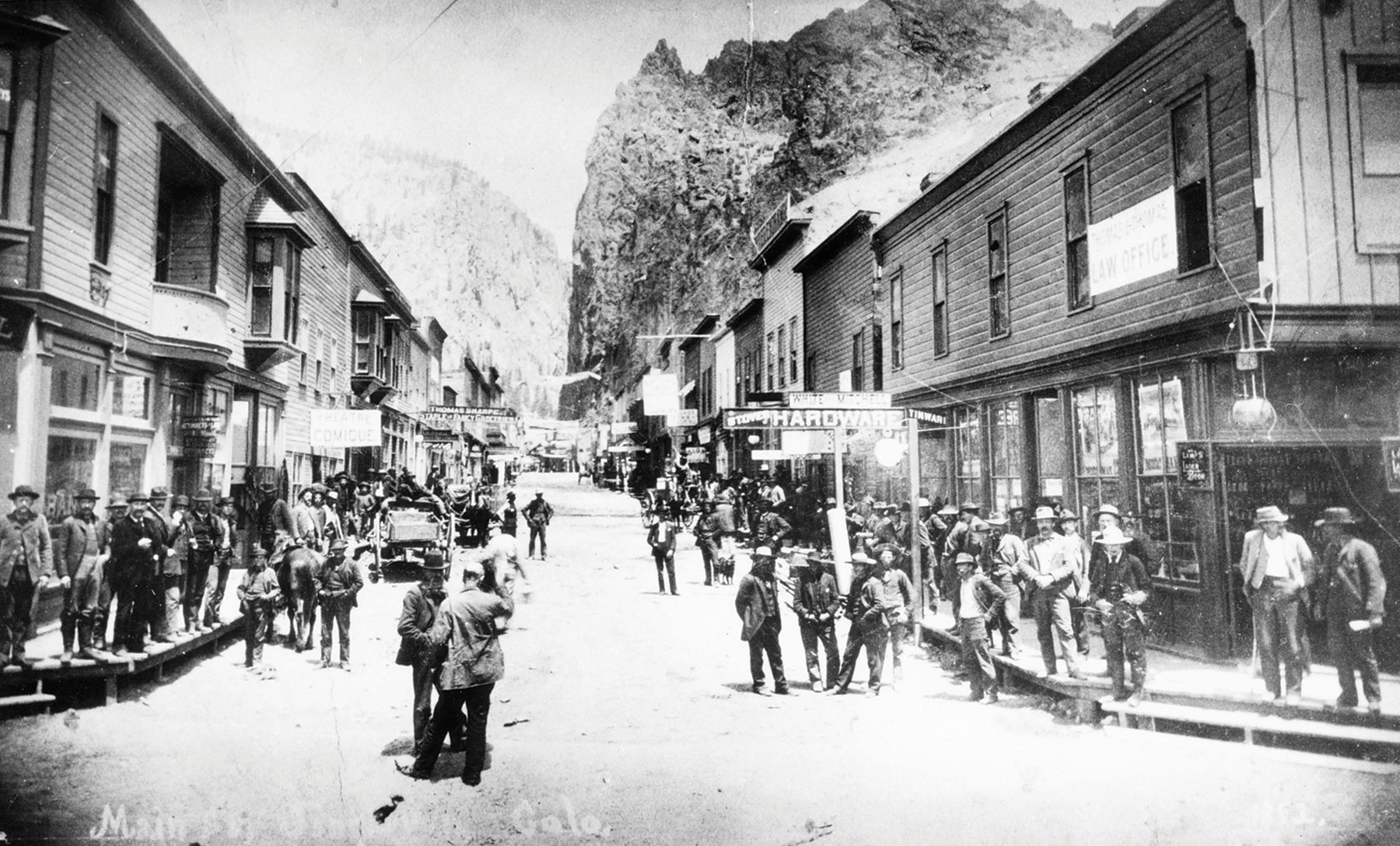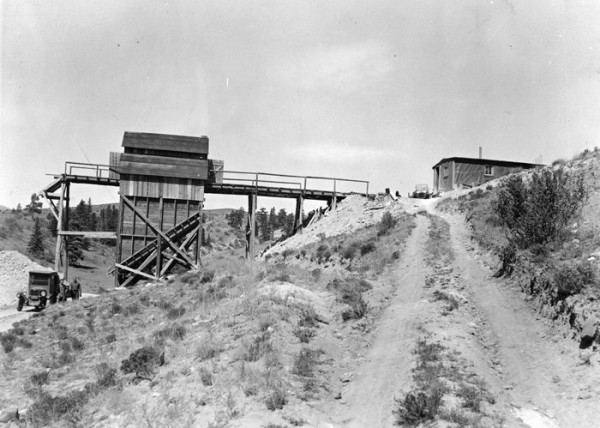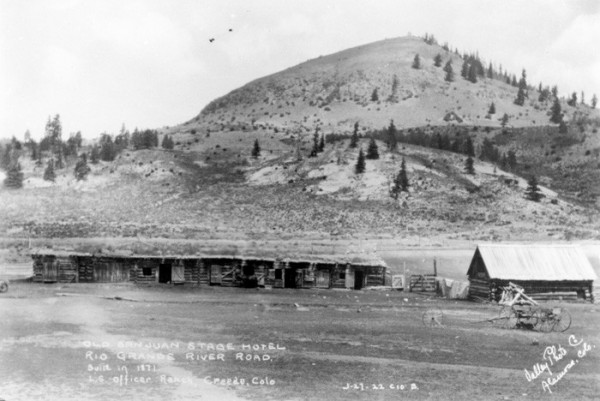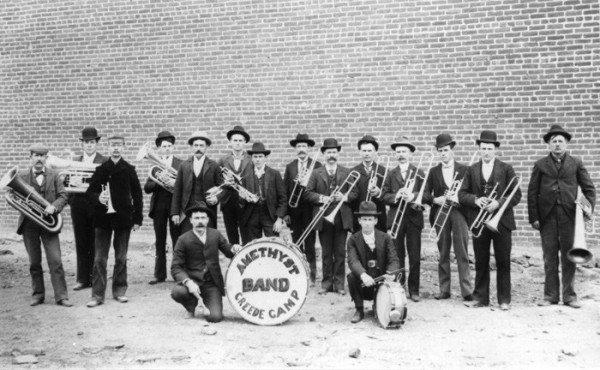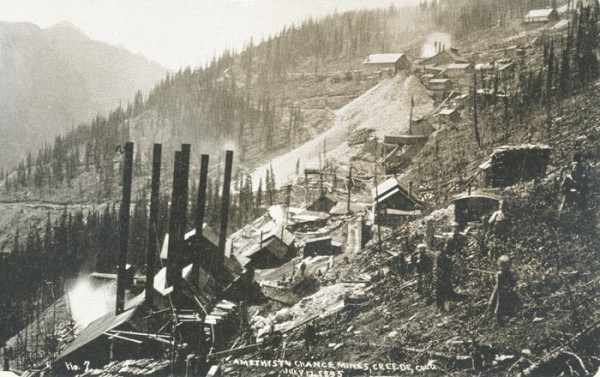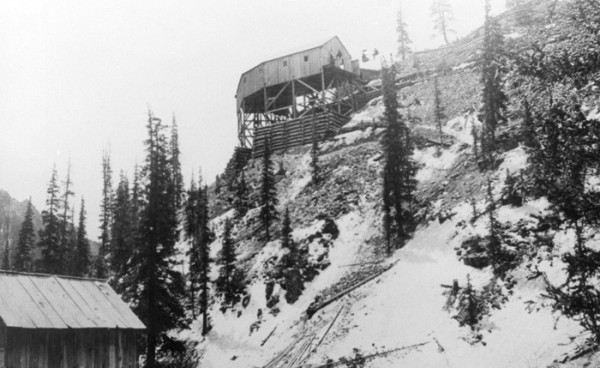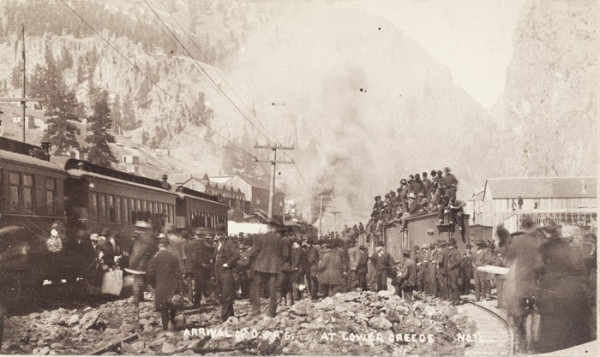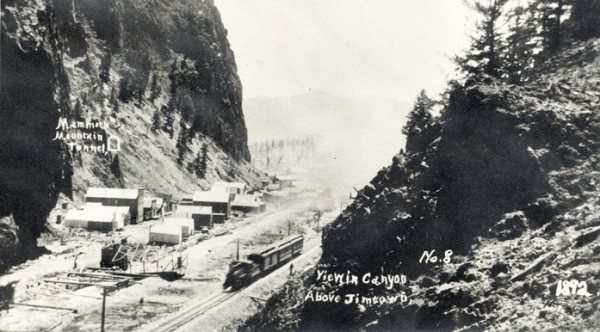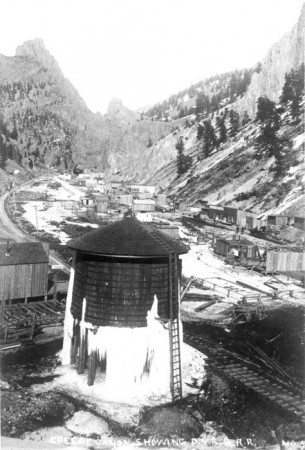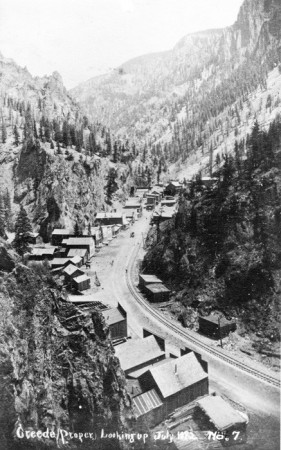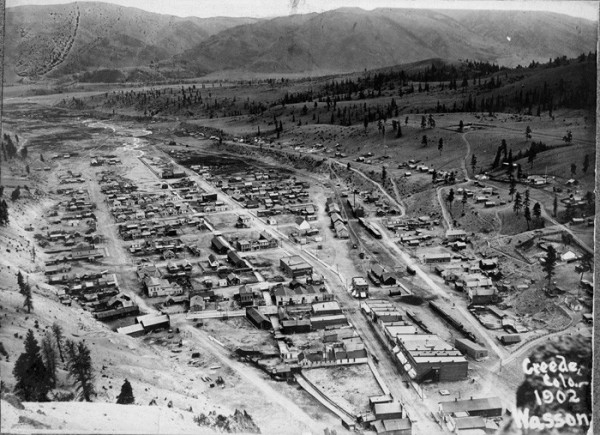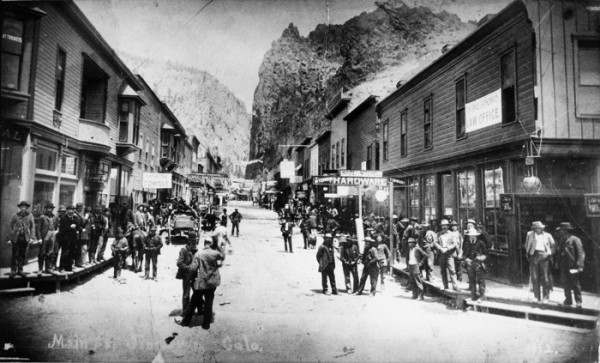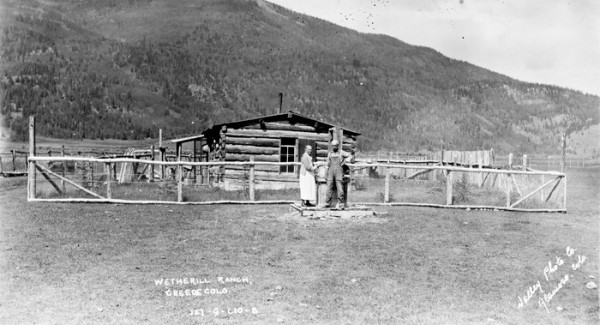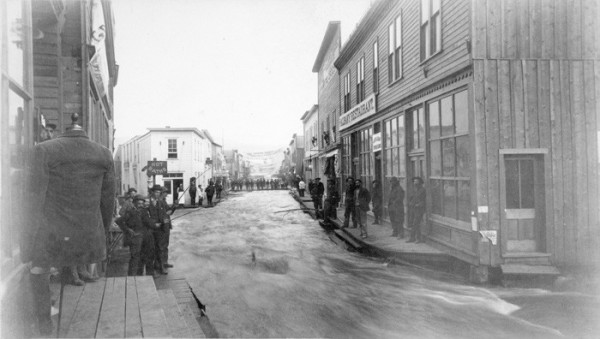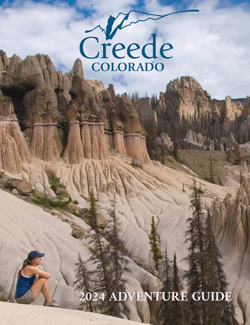Our History
There Is No Night in Creede
Here's a land where all are equal
Of high or lowly birth -
A land where men make millions
Dug from the dreary earth.
Here meek and mild eyed aburros
On mineral mountains feed,
It's day all day in the day-time
And there is no night in Creede.
The cliffs are solid silver
With wondrous wealth untold,
And the beds of running rivers
Are lined with purest gold.
While the world is filled with sorrow,
And hearts must break and bleed,
It's day all day in the day-time
And there is no night in Creede.
~ Cy Warman
About Creede
From Ute Hunting Ground...To Silver Mining Boom Town
Original Inhabitants
A variety of Native American peoples frequented the Upper Rio Grande Valley long before western Europeans knew of its existence. Archeological evidence reveals that Paleo-hunters camped in the high country. A later hunting-gathering group, known today as the Utes, also migrated through the San Juan Mountains according to the seasons—pushing into the high country in the summer and returning to lower, protected valleys in the winter. However, the cold mountain winters were not favorable to permanent native settlements.
Native people gave special significance to the formations in the Wheeler Geologic Area. The hot springs at Wagon Wheel Gap also were a favored site. In the mid-1800s an influx of settlers, including New Mexicans from the south and Homesteaders from the East, curtailed the Utes’ nomadic life. After the discovery of gold in the San Juan Mountains, troops at Fort Garland moved the San Luis Valley’s Ute people off their traditional lands onto reservations in the Four Corners region. Ouray, who had married an Uncompahgre maiden, Chipeta, became influential in helping guide the southern Ute bands through their 19th century transitions.



















Pioneers and Tourists
Ranching and tourism are well-established traditions in the Upper Rio Grande Valley. Kit Carson’s brother-in-law, Tom Boggs, and several other settlers began farming at Wagon Wheel Gap as early as 1840. M.V.B. Wason homesteaded the Wason Ranch in 1871. Hay became a major commodity for the mining camps at Summitville and Lake City. Prospectors and other travelers, lured by the wealth of the San Juan’s mineral fields, coursed toll roads linking Lake City with supply towns in the San Luis Valley. Barlow and Sanderson stages made several runs daily.
By the mid–1870s, tourist activities also began to thrive along the Rio Grande. Books such as Crofutt’s Gripsack Guide or Ingersoll’s Crest of the Continent enticed Easterners and Europeans to experience the American West. The pioneering name of Soward became associated with the Upper Rio Grande Valley in 1876 with the purchase of the Antelope Springs Stage Station and Halfway House. James Workman bought the Texas Club, now the location of Freemon’s Ranch, at the stage-stop settlement of San Juan. Nearly 15 years before there was a town called Creede, a hotel opened at Wagon Wheel Gap.
The Denver & Rio Grande Railroad began transporting eager tourists into the area as early as 1883 with the opening of the depot at Wagon Wheel Gap. Fishermen would ride the train to a favorite “hole,” disembark to fish for the day, and then catch a ride on a returning train. The Utes’ favored hot springs soon became a popular spa with tourists coming in droves to “take the waters.” Praise for the curative and restorative benefits, both by drinking from the bubbling hot springs as well as bathing in the soothing flow, spread through publications promoted by the railroad. A lavish bathhouse sheltered guests as they luxuriated in the therapeutic springs. The historic bathhouse still stands at the 4UR Ranch as a poignant reminder of those early tourism heydays.
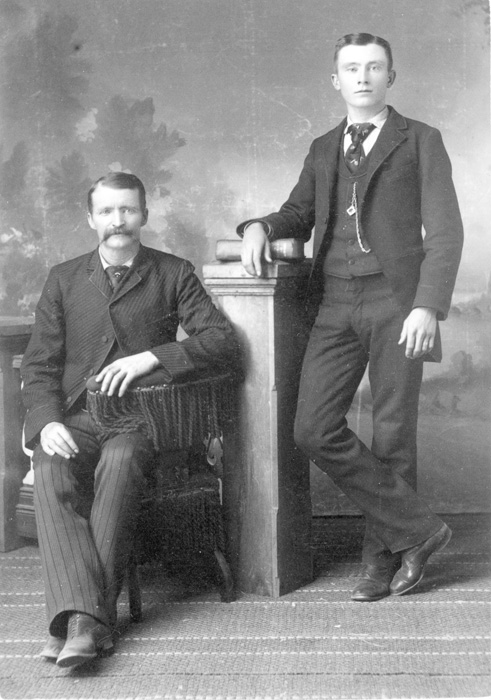
Fortunes Made and Lost
(Nicholas Creede & Nephew Harvey Lester, 1870 - Creede Historical Society Archive #3069-P-434)
In 1890, the Upper Rio Grande Valley’s destiny changed dramatically. Nicholas Creede discovered a high-grade silver vein on Willow Creek, a tributary of the Rio Grande. The great rush was on! The boom camp’s population quickly swelled to 10,000. (There are about 850 full-time residents in Mineral County today). Slab cities and tent towns like North Creede, East Creede, String Town, Jimtown, and Amethyst seemed to appear overnight. Fortunes were extracted from mines with colorful names such as Amethyst, Holy Moses, Commodore, Last Chance, and Kentucky Belle.
To reach the ore field and camps, the hordes of miners and camp tag-alongs had to cross Wason’s ranch. The crafty homesteader opened a toll road, but the hefty fee caused disgruntled travelers to proclaim that Wason must have been a pirate on the high seas before settling on the Rio Grande. The uproar brought results with the State of Colorado buying the toll road right-of-way from Wason.
In 1891, Colorado Springs railroad tycoon William Palmer extended the rail line from its terminus from Wagon Wheel Gap into Willow Creek Canyon just above present day Creede. During the ensuing boom years, two trains arrived and departed Creede daily. By 1892 over a million dollars in silver had shipped down-valley. Creede made Colorado a “boom” state once more.
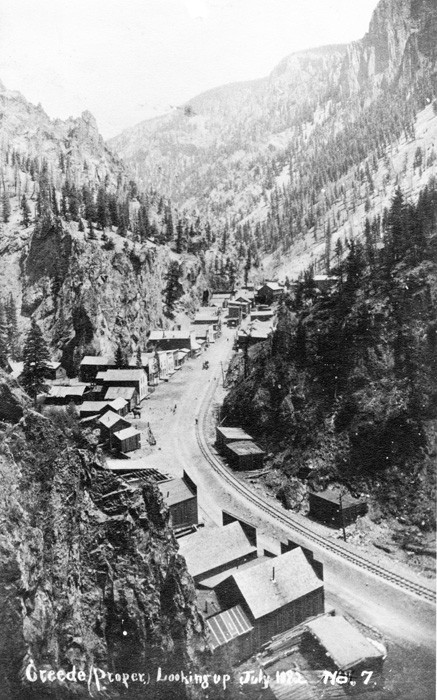
(Creede Original Town Site, 1892 - Historical Society Archive #450-CRO-6c1)
Along with the prospectors and miners came gamblers, saloonkeepers and ladies of the evening. Bob Ford, reputed slayer of Jesse James, opened a dance hall and saloon. Soapy Smith, owner of the Orleans Club, soon declared himself boss of Creede. Bat Masterson, of Dodge City-Wyatt Earp fame, operated another saloon for a Denver firm. Poker Lulu Swain, the Mormon Queen, and Timberline plied their trade in “the House.” Although the Creede Candle lamented: “Creede is unfortunate in getting more of the flotsam of the state than usually falls to the lot of a mining camp,” it’s editor, Cy Warman, also caught the spirit and hopes of the lively community with his famous lines: “It’s day all day in the day time, And there is no night in Creede.”
Spar City, Stumptown, and Bachelor evolved into thriving communities. Bachelor even boasted a school. Today, Spar City is a private resort. Only nostalgic relics mark the sites of Stumptown, Weaver, and Bachelor (see Bachelor Historic Tour Loop). A series of floods and fires destroyed the original buildings in East Willow Creek Canyon. Many inhabitants moved to neighboring camps, but for only as long as it took to rebuild. The silver panic of 1893 also threatened to bring an end to Nicholas Creede’s bonanza. Fortunately, the high assay of the ores in the Creede District in other valuable minerals carried the miners through the Depression of the 1890s. Creede became the silver camp that would not die.
Eventually Jimtown appropriated the name “Creede.” Prospectors and families alike abandoned the other camps and moved to the little town at the mouth of Willow Creek Canyon with its brick stores and electric streetlights. Following the example of Telluride, which was the first electrified community in the world, the Creede miners installed their own electric system just one week before Cy Warman penned his literary legacy about there being no night in Creede.
Hard rock mining continued as the dominant economic factor in Creede for nearly a century. In 1985, when the price of silver dropped again, the last mine, the Homestake, closed permanently. Today Mineral County is returning to its tourism roots. And Creede, the little mining camp that refused to die, shares not only its beautiful natural setting, but also its colorful heritage with thousands of visitors every year.

